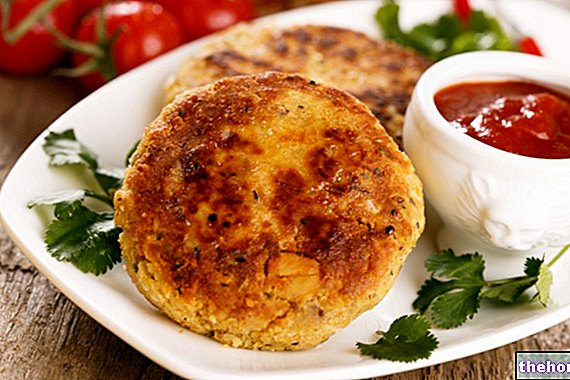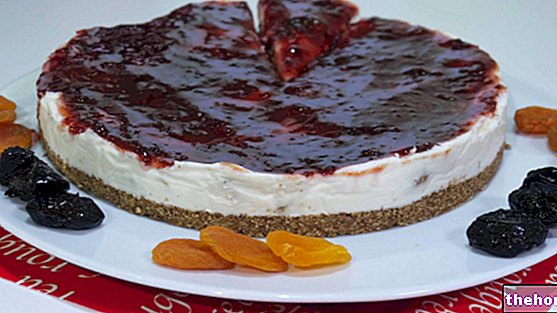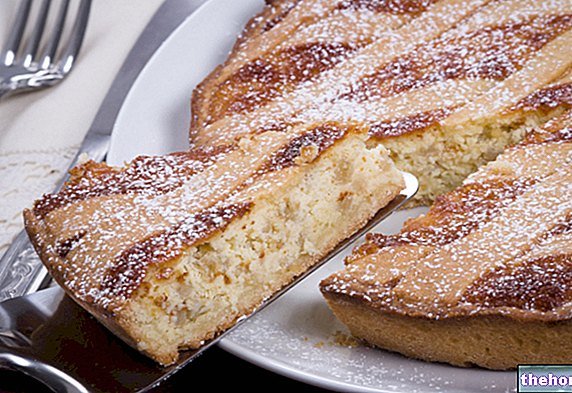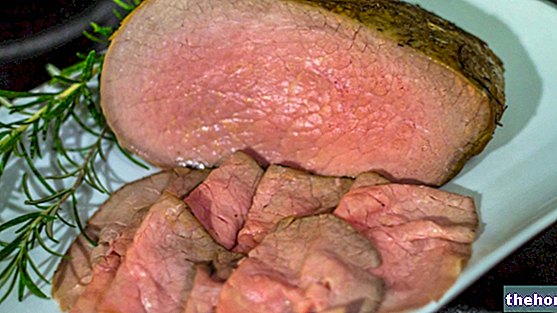Today I will show you an example of how much the kitchen, in some cases, can bring benefits to our health: we will prepare together the golden milk, also known as golden-milk. This drink was baptized for the golden aspect, conferred by the "main ingredient: turmeric. Let's see how to prepare this precious antioxidant, immunostimulating and digestive drink: it will be a real panacea!
Video of the Recipe
Problems with playing the video? Reload the video from youtube.
Identity Card of the Recipe
- 69 KCal Calories per serving
-
Ingrediants
For the turmeric paste
- 40 g of turmeric
- 1 teaspoon of pepper
- 100 ml of water
For the daily basic drink
- 150 ml of vegetable milk or milk
- 1 teaspoon of agave syrup or honey
Materials Needed
- Large cup or bowl
- Optional: glass blender
- Whip
- Small saucepan
Preparation
- First, obtain the turmeric "sourdough", which is a very thick batter based on turmeric and water that will serve as the basis for the preparation of the drink. Bring the water to a boil in a saucepan, then pour the turmeric and a generous grating of black pepper: you will have to obtain a very dense and compact mixture. Gather in a bowl, cover with cling film and leave to rest in the fridge: the turmeric paste will keep for over a month.
The choice of pepper
Pepper is not a spice added at random! The piperine contained within it is an alkaloid capable of improving the absorption of curcumin.- Once the pasta is obtained, proceed with the preparation of the daily drink. Bring a cup of milk (cow or vegetable) to the boil, sweeten with a teaspoon of honey (or agave syrup, for the vegan version) and add a scant teaspoon of turmeric paste. The procedure must be repeated every day for at least a month, or until the turmeric paste is used up.
Did you know that
As we saw in the theoretical video, turmeric is widely used for its beneficial properties. Thanks to the high concentrations of curcumin present in the dry extract of turmeric, the spice is used in folk medicine as a very powerful antioxidant, immunostimulant, anti-arthritic, digestive and choleretic. In addition, it seems that curcumin can somehow contribute to the prevention of some cancers, such as colon and prostate cancer (although there are no in-depth evaluations on the actual anticancer efficacy).- Shake everything or blend the drink to obtain a bubbly smoothie (turmeric milk or golden milk).
- It is recommended to take the drink once or twice a day, for at least a month.
Attention!
Turmeric milk cannot be defined as a drug or even considered a real supplement: the doses of curcumin present in turmeric powder (not standardized), in fact, are very low. Nevertheless, it should be remembered that in turmeric powder, the other curcuminoids contribute to enhancing the action of the most important active ingredient (curcumin), which is responsible for most of the therapeutic-like effect.Alice's comment - PersonalCooker
In our pantry precious foods are hidden that prove to be faithful allies of our health: I am talking about a spice widely used to flavor or to give color to foods: turmeric, obtained by grinding the rhizome of Curcuma longa, belonging to the family of Zinziberaceae.
Part Used
The drug of the plant is constituted by the tuberized rhizome, that is the underground part of the stem rich in reserve nutritional molecules: from the rhizome a precious phytocomplex is extracted in which curcumin stands out, the substance to which most of the beneficial properties are also used for therapeutic purposes. Curcumin is a bright yellow-orange vegetable pigment, an active and very representative polyphenol from a pharmacological point of view. In addition to curcumin, the phytocomplex extracted from turmeric is composed of a series of curcuminoids (phenolic substances) which contribute to enhance the effect of curcumin (synergistic effect).
Taste
Turmeric has a strong, intense, warm and pungent flavor reminiscent of ginger (which, not surprisingly, belongs to the same botanical family).
In the kitchen
Turmeric is a spice widely used in Indian and Asian cuisine, but it is part of the formulation of numerous Italian recipes. It is used as a constituent of curry, for the preparation of sauces and as a food coloring.
In folk medicine
Turmeric has always been used in Ayurvedic medicine for the treatment of many ailments.
Properties of Turmeric
Turmeric is used for the properties:- Anti-inflammatory;
- Antioxidants;
- Immunostimulants;
- (Potentially) anticancer: curcumin, however, seems not very bioavailable when taken orally because, at the hepatic and intestinal level, it is rapidly conjugated to metabolites that exert a much lower activity than the reference molecule.However, curcumin taken orally tends to accumulate in the digestive tract, where it is not by chance that it carries out the most interesting biological and therapeutic activities (oral, gastric, hepatic, pancreatic, colorectal).
- Eupeptic (digestive);
- Choleretics and cholagogues: promotes the production of bile and its outflow in the intestine. For this it improves the health of the liver and helps to eliminate excess cholesterol and promotes the digestion of abundant and high-fat meals.
- Antiviral, antibacterial, antifungal.
Therapeutic Applications
Turmeric is often used for the treatment of certain ailments or for the prevention of certain diseases:- Uncomplicated liver disorders;
- Irritable bowel syndrome;
- Adjuvant in the treatment of Alzheimer's disease at an early stage (counteracts the neurological degeneration of the disease);
- Prevention of colon, prostate and lung cancer;
- Non-obstructive cholecystitis;
- Bad digestion.
Curcumin is present in pulverized turmeric root in doses of about 3% (the value varies from 1.06 to 5.70% based on: species, soil, environmental conditions of the plant). A continuous and systematic intake is recommended in doses equal to 1.5-3 g of dried and pulverized rhizome per day (about 1g / day of curcumin). Up to 8g / day the administration of curcumin has not shown toxicity. , it is recommended to take 50-500 mg per day of dry matter (standardized in 95% curcumin).
Attention
Do not give to children under the age of 18.
As a precaution, do not take during pregnancy and breastfeeding.
Its administration is not recommended in case of gallstones.
Comment on the recipe
In this recipe, cooking and phytotherapy embrace: on the one hand we have the pleasure of a hot drink, on the other the health benefits of turmeric.
Nutritional values and Health Comment on the recipe
Latte d "Oro is a food of vegetable origin that also falls within the group of drinks. It has an average energy intake, comparable to that of animal milk.
Calories come mainly from carbohydrates, followed by lipids and finally proteins. Carbohydrates are mainly simple, fatty acids above all unsaturated and peptides tend to have a medium biological value.
Cholesterol is absent and fiber is present in good quantities.
Latte d "Oro is a food that lends itself to any diet; it has no contraindications for people who are overweight or suffer from metabolic diseases. It is suitable for lactose and gluten intolerance. It is also appropriate for the diet. nutrition of vegetarians and vegans.
The average portion of Latte d "Oro is about 200-300ml (70-140kcal).




























